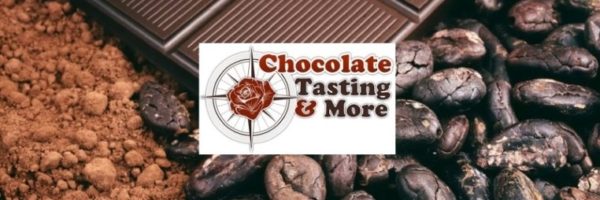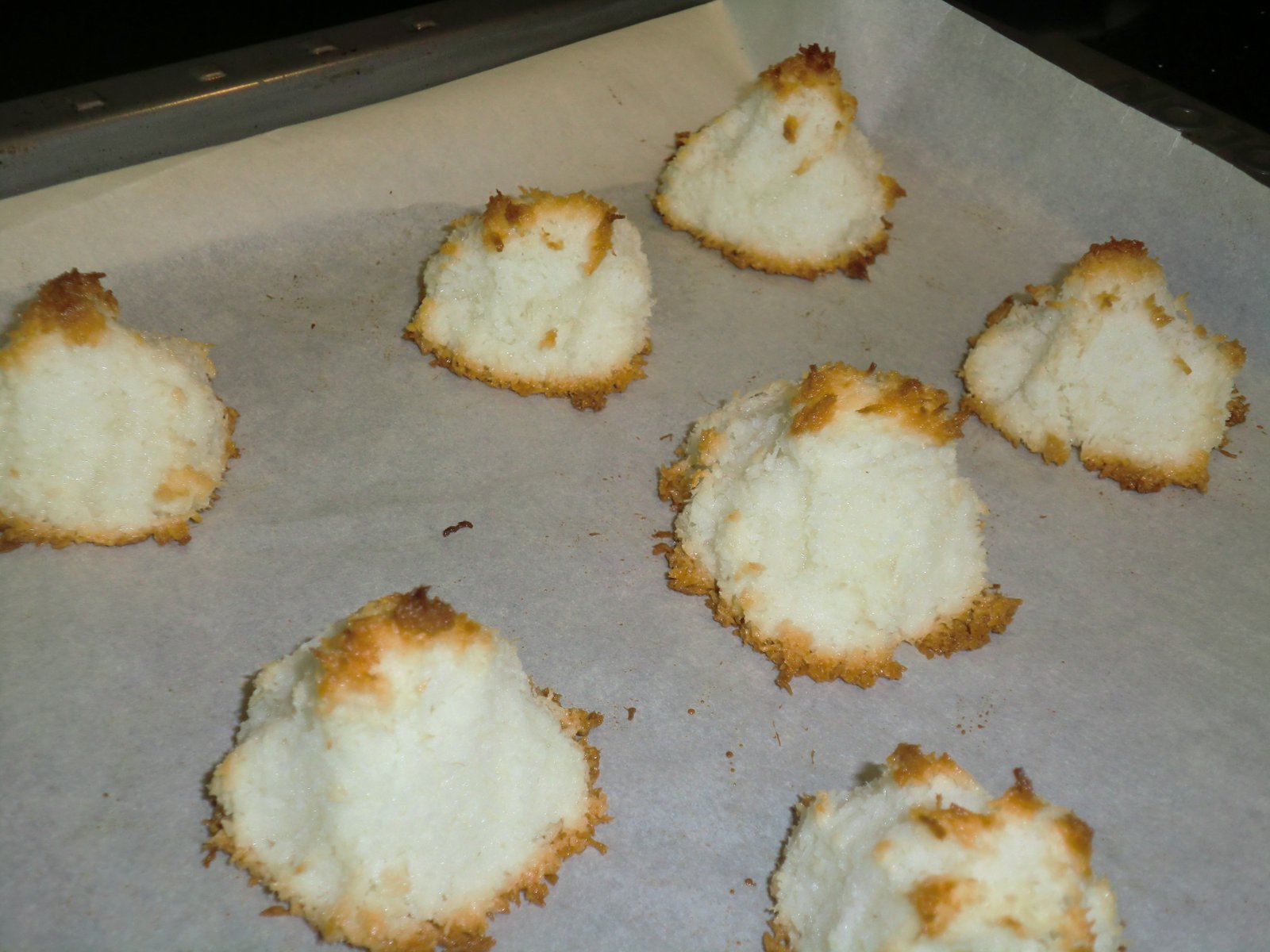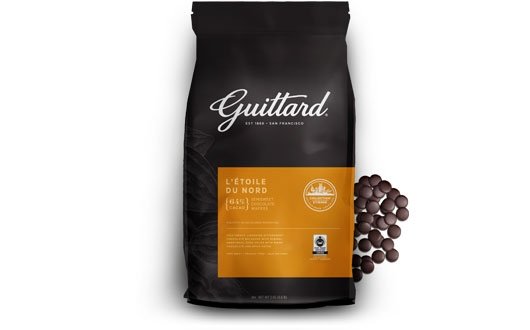Chocolating with Savina: Daytona Beach, FL
This month, we’re heading to the sunny east coast of Florida. During our “chocolating” time together, we’ll stop at a local chocolate shop and explore some of the area’s rich history and cultural features along the way. I visited this part of Florida in 2019 while my husband and I were living seasonally in St. Petersburg, FL.
Mention Daytona Beach to someone and the word racing would probably come pouring out their mouth. True, this coastal resort town has been hosting the NASCAR races for over 60 years. As you head into town from Hwy 75 on US Route 92/International Speedway Boulevard, you are reminded of this fact as you pass by the enormously imposing Daytona International Speedway complex on the right.
First Things First
Yet, you soon notice something coming up on your “chocolate-radar.” It tells you to continue ahead and turn right on N. Beach Drive, just before crossing the water. Drive two blocks and on the right side, you’ll find Angell & Phelps Chocolate Factory.
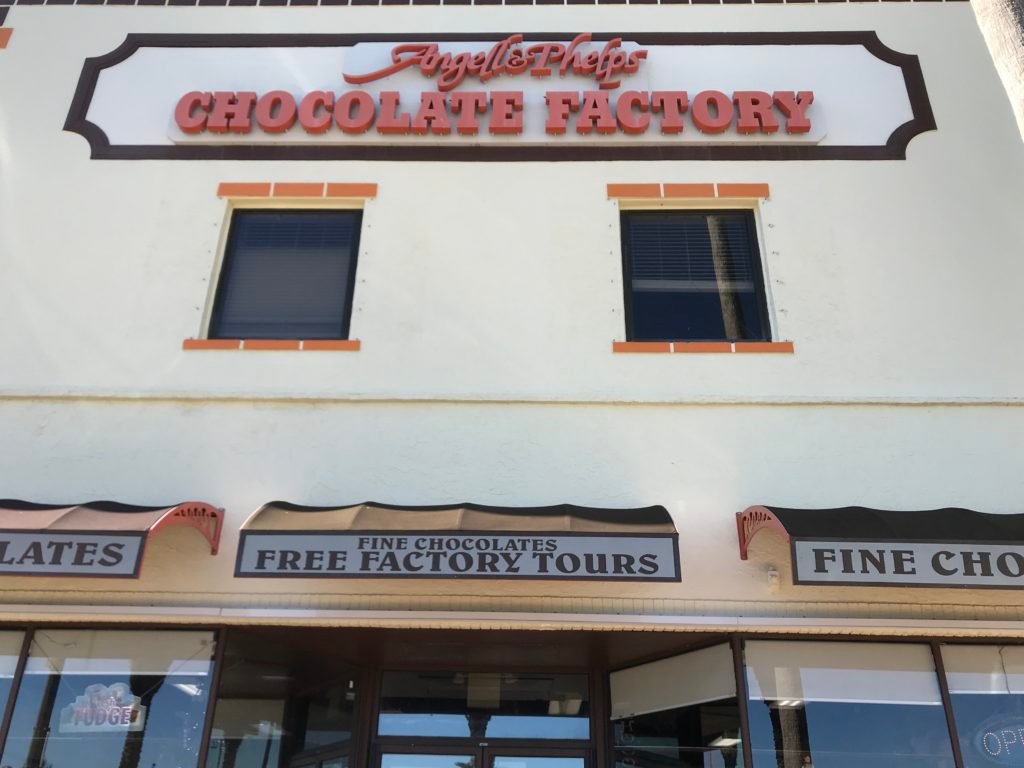

Right as you walk through the front door of the chocolate factory, your senses are awakened by the wonderful aroma of chocolate. The gift shop is extensive and my eyes catch a fun saying on a t-shirt for sale: “Quick, hide the chocolate in my mouth!” I like this place already.
Displays showcase their traditional chocolate confections along with their specialty items: giant peanut butter cups, chocolate bark, Rocky Road Heavenly Hash, truffles, and chocolate covered bacon. They even produce “fried eggs” to go with later–only by special request! If you are into sea life, they have one of the most realistic chocolate sea stars I’ve seen.
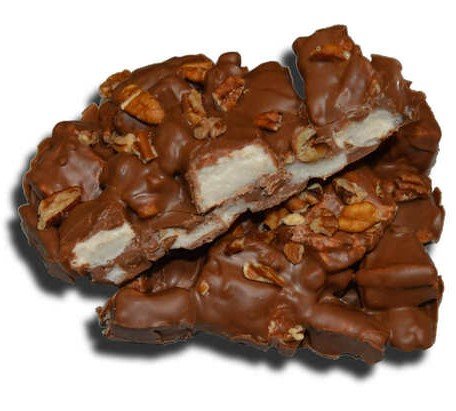
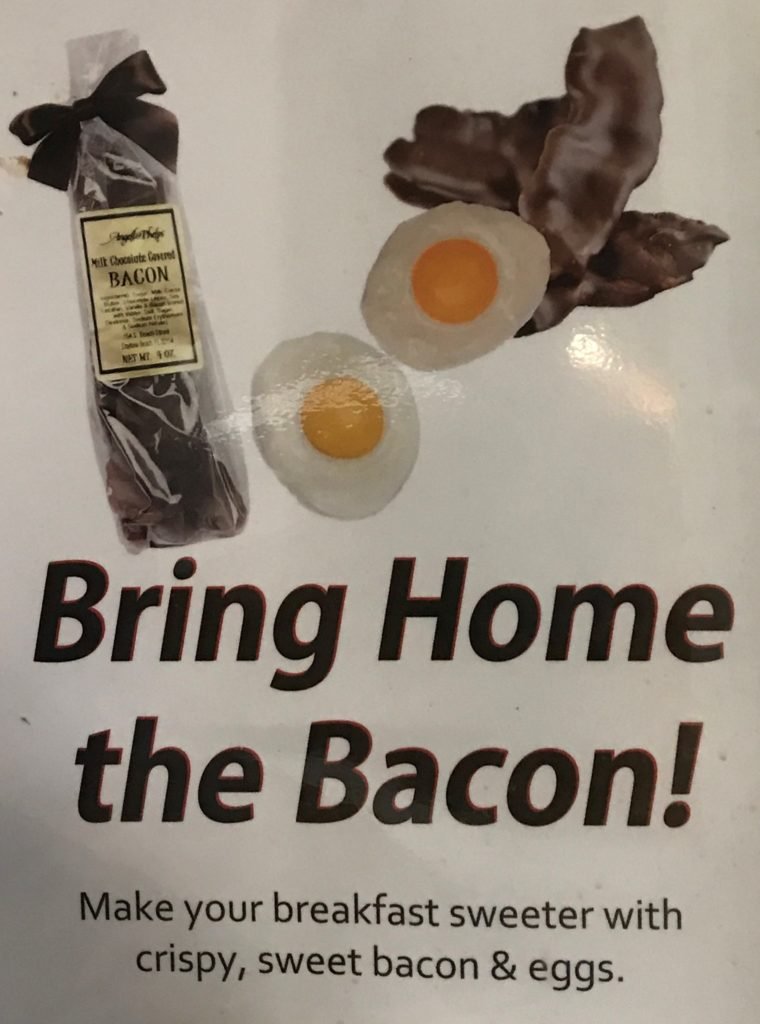

Sea Star
What’s a Honeybee, you may ask? It’s the Angell and Phelps milk or dark chocolate variation of the classic Turtle, made with rich butter caramel and macadamia nuts instead of pecans. The pretzels and potato chips they use both hail from Pennsylvania’s Amish Country. The pretzels are made by the Julius Sturgis Pretzel Bakery, the first US commercial pretzel establishment in 1861. Their chocolate dipped potato chips, my favorite, are created with Martin’s Famous Waffle-Cut Potato Chips, which are cut just a bit thicker to make them deliciously crisp. Sponge Candy is another traditional favorite.



Angell & Phelps is not only famous for their hand made products, but also for their extremely popular and free 20-minute tour. They definitely pack in a lot of chocolate information. Discover how chocolate is made from bean to bar and what makes their chocolate so special. It is obvious that the woman leading the tour is passionate about what they do, and that feeling permeates throughout the staff and creations.
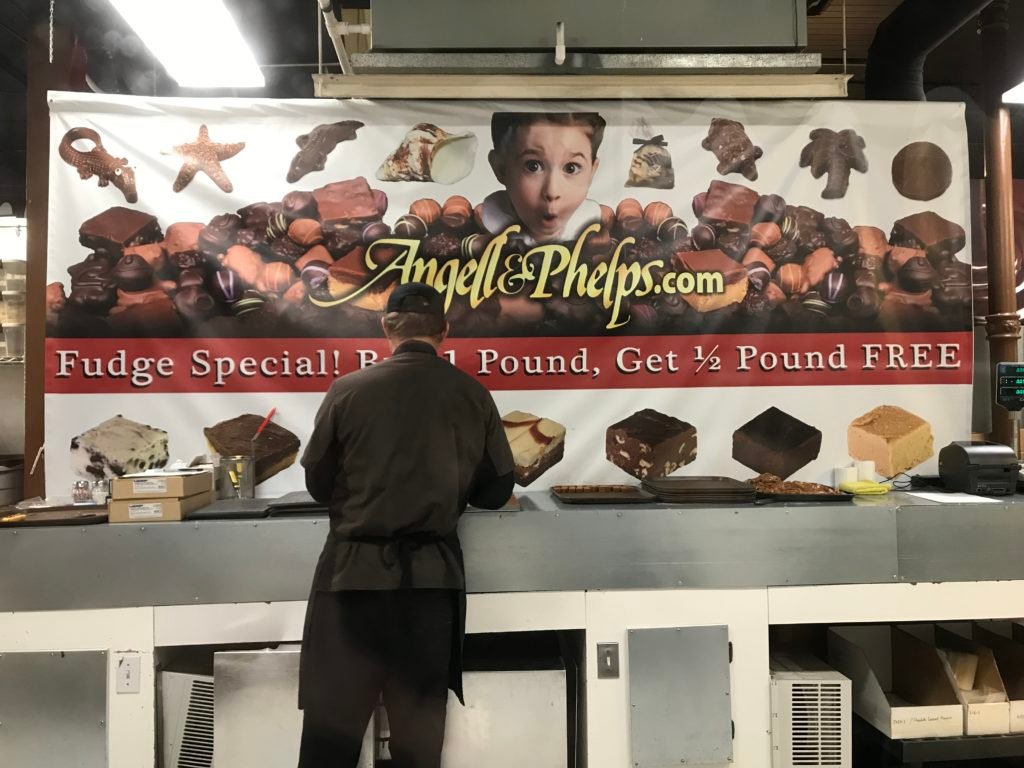
I recently spoke with Chuck Smith, owner/candy maker of Angell & Phelps Chocolate Factory. It has been two years since our visit, so I had some questions to ask and specifically wanted to know how they were faring with the pandemic and these uncertain economic times:
What’s the history of Angell & Phelps? It was founded in 1925 when two childhood friends, Riddell Angell and Cora Phelps, started a chocolate business in Mackinac Island, Michigan (also the hometown of Kilwins Chocolates). I find their story especially inspiring considering the limited business opportunities that were available to women in the 1920s. They moved their shop to Daytona Beach after the start of World War II.
After a few decades of dedication, Riddell and Cora retired and sold the shop to the Reisinger’s, a husband and wife team from Ohio. Then in 1983 after retiring from the military, Dr. Alvin Smith fulfilled his dream of opening a chocolate store by purchasing the company. In those days, everything was done by hand. There were no machines with the exception of an enrobing machine that was used only during the Christmas season. Today the business is operated by his son Chuck. They use some of the original recipes and equipment, including copper kettles, and are very conscientious about honoring the founders’ history that came before them.
The original chocolate shop, opened by Riddell and Cora, was located about a half a mile from the current location. In 1994, Dr. Smith moved it to where it is now, in the old Dunn Brothers’ Hardware Store building, which for years was the only hardware store in town.
How did the original owners deal with the Florida heat? In the early days, the confectionary duo were in Daytona only during the winter. They also had many less products back then. Yet the Florida heat still was a major problem. There was in-store air conditioning in front in the store, but not in the back where all the production took place. Cooling was accomplished by having a fan blow over ice placed in freezers.
Tell me about the choco-train! It was Chuck’s idea, in 2010, to put a model electric train and tracks along the perimeter of the store’s main room. Unfortunately, it hasn’t been running for over a year now and is waiting for parts and needed maintenance. It is still there, so be sure to ask a staff member to point it out. Here’s a video of it chugging around the store in 2019:
How has the pandemic affected your business? The company experienced the most shipping, delivery and curb side pick up business ever. Yet, like the majority of businesses today, a shortage of staff has been a major problem as well as getting supplies. (Fortunately he had stocked up on them). They are currently closed on Sundays and their staff-led tours have been replaced with a self-guided one until further notice. Don’t worry, though, there are still lots of samples included. So be sure to call or check their Facebook page for shop hours and tour status before heading their way.
It was a pleasure “talking chocolate” with Chuck. We could have stayed on the phone for hours. I guess that could be another definition of chocolating! 😊
If you won’t be in the area any time soon, you might want to order some items from them online. Summertime? No worries, even your summer deliveries will arrive in good shape because of their careful packaging.
Angell & Phelps Chocolate Factory 154 S Beach St. Daytona Beach, FL 32114 386-252-6531

Heading back outside into the warm Florida air, we walked up and down a few blocks of North Beach Drive. This is the historical downtown district of Daytona Beach-where everyone did their shopping before malls! The chocolate shop is located just a few doors down from a beautiful Kress Building, a reminder of the chain of “five and dime” stores built in hundreds of US cities from 1896-1981. This particular building was built in 1928 and confirms Samuel Kress’ vision that his stores would stand out as works of public art.
There is still much to explore, so let’s get going. Continue south along the palm-tree lined N. Beach Drive and turn left onto E. Orange. You just crossed the Halifax River, actually an estuarine lagoon and part of the Intercostal Highway, a 3,000-mile inland shipping and pleasure waterway from Boston, all the way around the tip of Florida, and then following the Gulf Coast to Brownsville, Texas. The name of the Halifax River is a reminder of the British rule of Florida between 1763 and 1783.
Tip of the Peninsula
Continue straight and then turn right on State Road A1A. Today, SR A1A serves as more a main coastal highway that spans for more than 375 miles along Florida’s East Coast, from Key West at the southern tip of Florida, to Fernandina Beach, just south of Georgia on Amelia Island. It’s the main road through most of Florida’s oceanfront towns.
For 10 miles, you will pass through the coastal communities of Daytona Beach Shores and Wilber-By-The-Sea. Then turn left on Lighthouse Road. Our destination: The Ponce de Leon Inlet Lighthouse and Museum. When you arrive, you feel like you’ve just entered a whole other world.

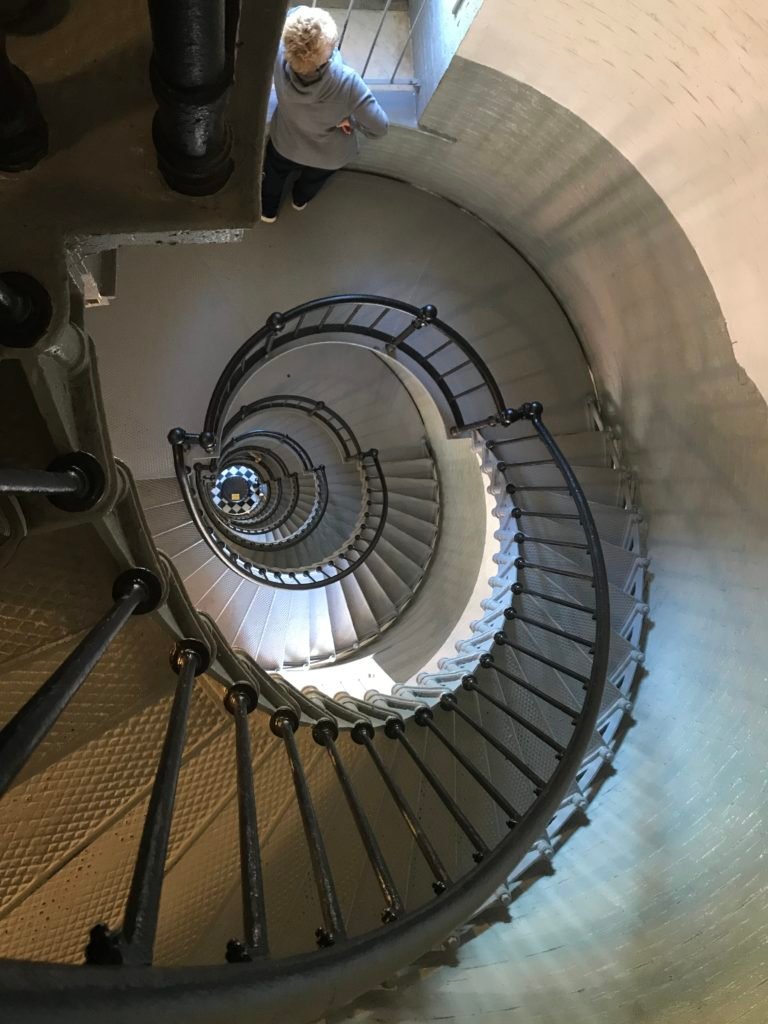
At 175 feet, it is the tallest coastal sentinel in the Sunshine State. If you are able, be sure to climb the to see a bird’s eye view of the beautiful inlet itself and the surrounding area. Built in 1887, there are 203 steps from the ground level to the gallery deck at the top of the lighthouse for a beautiful 360 degree view. If you are physically unable to venture to top, the lighthouse is still impressive to look at from ground level and there much to see on the grounds, including a Fresnel light museum and beautiful gift shop.

Ponce Inlet Lighthouse and Museum 4931 South Peninsula Drive
Ponce Inlet, FL 32127 (386) 761-1821
It’s Beachtime
We’ll now take S. Peninsula Drive back north to Daytona Beach. Turn right on Curlew and then right on S. Atlantic (A1A). We started our beach exploration from the Club Wyndam’s Ocean Walk Hotel (located near the corner of Ora Street and A1A) . Step right outside their back doors and outstretched before you: the impressive Dayton Beach Boardwalk.
This historic promenade was constructed in the late 1920’s and now includes shops, restaurants, snack bars and the famous pier which juts 1000 feet into the Atlantic. You’ll also encounter a bandshell, clock tower and many beautiful embellishments made of coquina (Spanish for shellfish), a sedimentary rock composed of mollusk shell pieces and other invertebrates found along the Florida and North Carolina coasts, as well as a few other parts around the world. these were constructed by the WPA (Works Progress Administration) under President Roosevelt’s New Deal in the late 1930’s. Upon completion, the bandshell was considered the largest in the world.
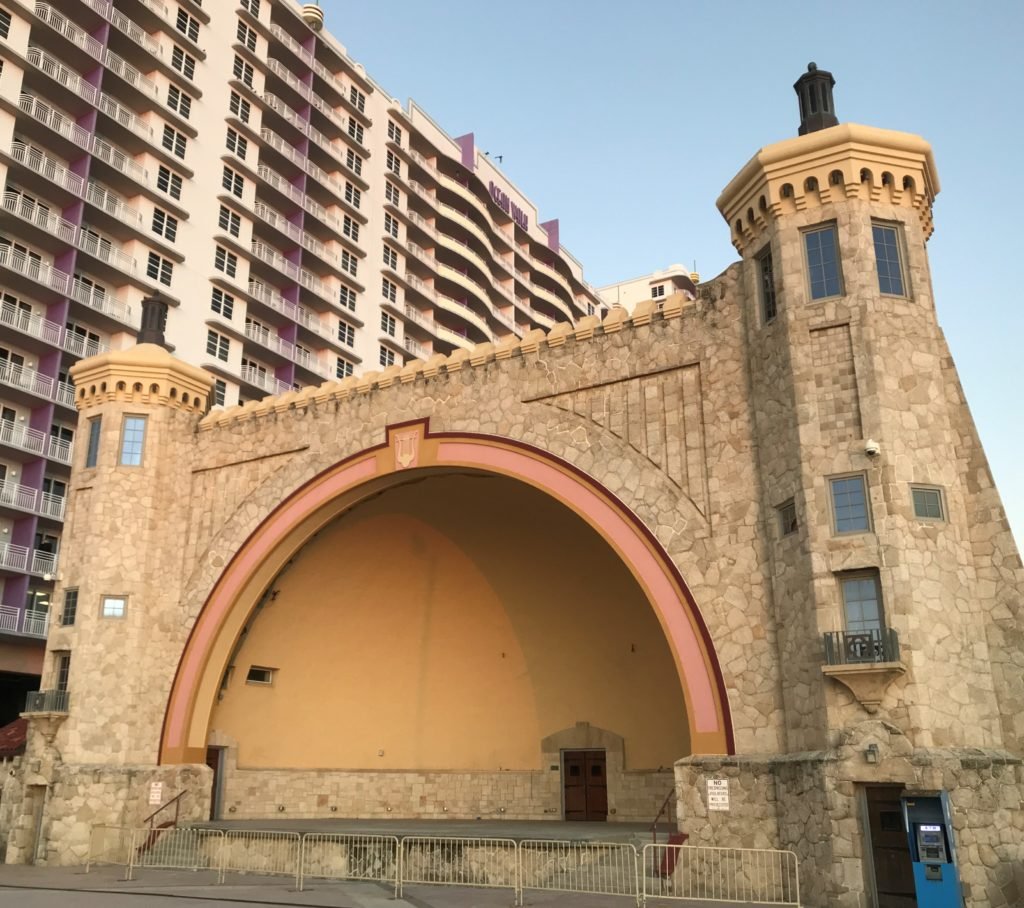

The Boardwalk or Broadwalk?
As with many things in history, nothing seems to be totally black or white. So is the case with the name of this Daytona Beach landmark. It was originally constructed of wooden planks or boards to keep sand out of people’s shoes, thus it’s name. Others claim it took its name not from the wooden boards but from the structure’s designer, Alex Boardman. Today it is made of concrete, making it actually a broadwalk. Local lore say a newspaper editor refused to call it that in print because of the negative connotation of the word “broad.” Today it is most commonly known as the Boardwalk. So, you can take your pick!
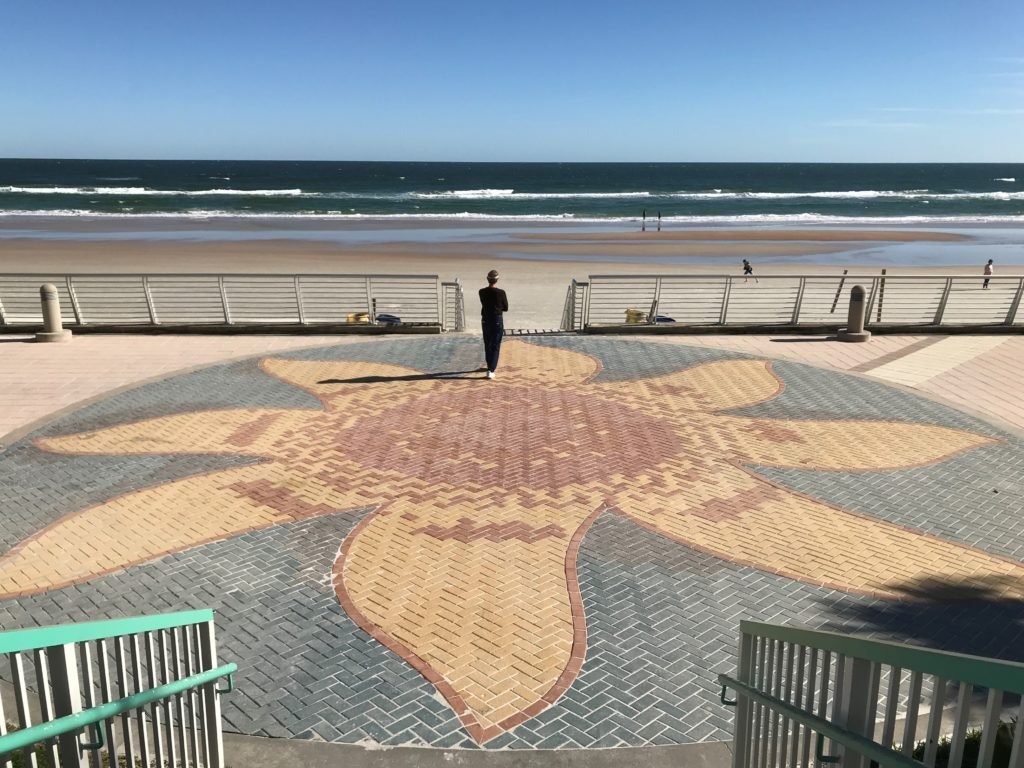
These were just a few highlights from our trip to this special corner of Florida in 2019. Four days here just didn’t seem to do the area justice. There is so much more to see. On the way out of town, our chocolate radar once again heads for Angell & Phelps Chocolate Factory for more confections for the road. Best wishes for many more years of success to this gem of a chocolate shop!
If you do make it to this special spot on the Florida coast (its only one hour northeast of Orlando), try and spend at least one night here to catch a glorious sunrise over the Atlantic. It is very special to walk along the boardwalk at that early hour, with very few people, and catch the golden hue cast over the coquina structures as the sun rises. It’s pure magic.
Daytona Beach: It’s so much more than a racetrack!

Join me next time for another
Chocolating with Savina
excursion.
Chocolating with Savina: Daytona Beach, FL Read More »
